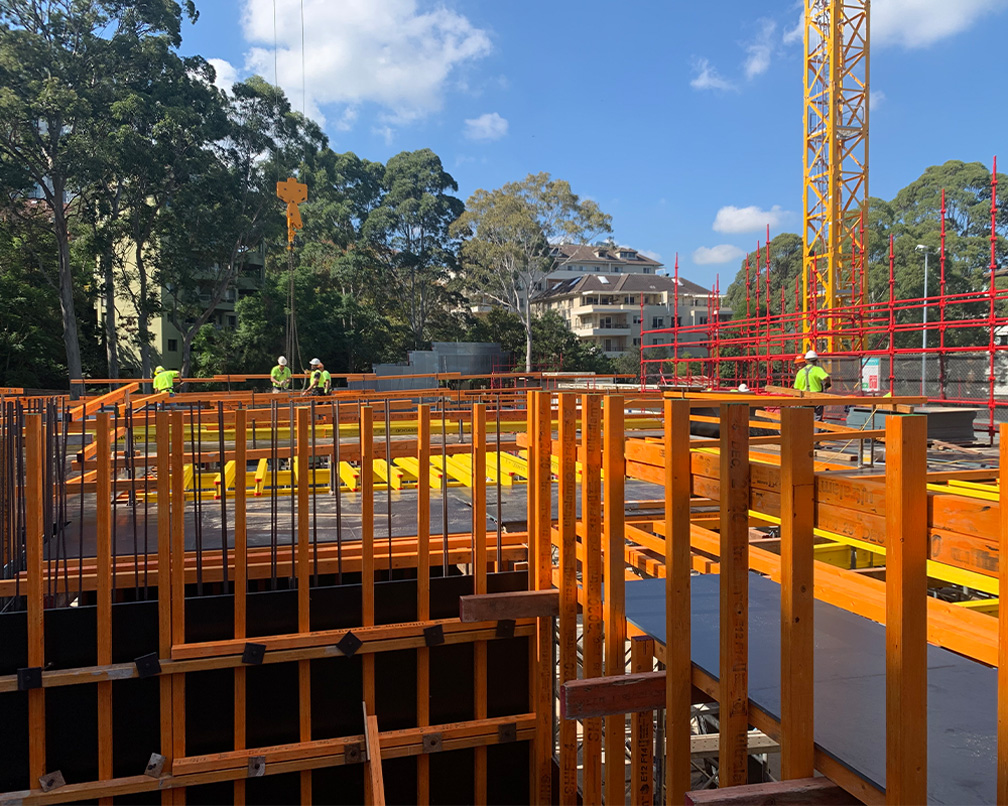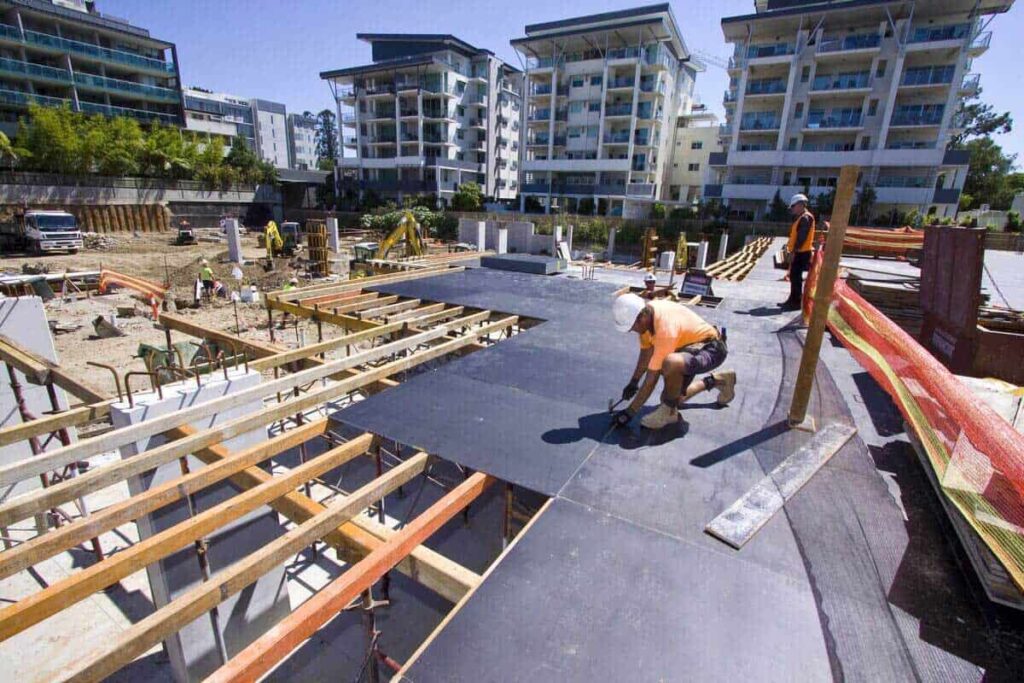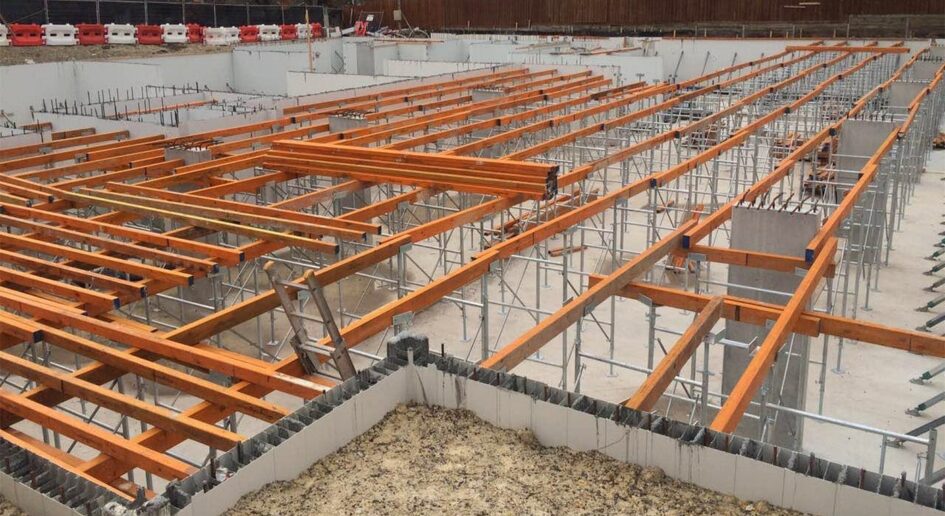LVL formwork, also known as Laminated Veneer Lumber formwork, is gaining popularity in construction projects due to its numerous advantages. This innovative construction technique offers a range of benefits that contribute to improved project outcomes. From its superior strength to its efficiency and ease of use, LVL formwork is revolutionizing the way construction projects are executed. Additionally, this formwork offers environmental benefits and cost-effectiveness, making it an attractive choice for builders and contractors. In this article, we will explore the advantages of using LVL formwork in construction projects in detail.
Understanding LVL Formwork
LVL formwork refers to the use of Laminated Veneer Lumber panels in creating temporary structures for concrete placement. It involves assembling pre-cut panels and components to form a mold for pouring concrete. Formwork LVL is highly versatile and can be used for various structures, including walls, columns, beams, and slabs. It offers a high degree of customization, enabling builders to tailor the formwork to their specific project requirements.
One of the key advantages of LVL formwork is its ability to withstand high pressure from the concrete during the pouring and setting process. This durability is essential for ensuring the structural integrity of the final concrete element. Additionally, LVL formwork is known for its smooth surface finish, which translates to a better quality concrete surface with minimal need for finishing work.
See Also: The working formula for Concrete Formwork Companies in Sydney

What is LVL Formwork?
LVL formwork utilizes Laminated Veneer Lumber, which is a structural composite material made from thin layers of wood veneers glued together. These veneers are carefully selected and arranged to ensure maximum strength and durability. Laminating the veneers also helps in minimizing defects, such as knots and warping, resulting in a reliable and consistent material.
Furthermore, LVL formwork is environmentally friendly as it is made from sustainable wood sources. The manufacturing process of LVL involves minimal waste, making it a more sustainable option compared to traditional timber formwork. This eco-friendly aspect is becoming increasingly important in the construction industry as builders strive to reduce their environmental impact.
Key Components of LVL Formwork
When using LVL formwork, several components come together to create a robust and efficient system. These components include LVL formwork panels, walers, props, and bracing systems. The LVL formwork panels act as the main structural element, providing support for the poured concrete. Walers, which are horizontal beams, are connected to the panels to distribute the load evenly. Props and bracing systems provide additional support and stability to the formwork structure.
Moreover, the versatility of LVL formwork allows for intricate designs and shapes to be achieved with ease. This flexibility is particularly beneficial for projects that require unique concrete forms or complex geometries. The adaptability of LVL formwork makes it a preferred choice for architects and engineers looking to push the boundaries of traditional concrete construction.
The Superior Strength of LVL Formwork
One of the primary advantages of using LVL formwork is its exceptional strength and durability. It can withstand significant loads and offer long-term stability in construction projects.
Furthermore, LVL (Laminated Veneer Lumber) formwork is engineered by bonding multiple layers of thin wood veneers together to create a strong and reliable material. This manufacturing process enhances the structural integrity of LVL formwork, making it a preferred choice for high-stress applications in the construction industry.
Durability and Longevity
LVL formwork is designed to withstand the rigors of construction work, making it highly durable. It can withstand heavy loads, extreme weather conditions, and repetitive use without compromising its structural integrity. Additionally, LVL formwork has excellent resistance to termites, fungal decay, and moisture, ensuring its longevity and reliability.
Moreover, the durability of LVL formwork translates to cost savings over time, as it requires less frequent replacement compared to traditional formwork materials. This longevity factor makes LVL formwork a sustainable choice for construction projects aiming for efficiency and long-lasting performance.
Resistance to Warping and Twisting
Unlike traditional formwork materials like timber, LVL formwork exhibits minimal warping and twisting. This ensures that the formwork remains in its intended shape, allowing for accurate concrete placement. The dimensional stability of LVL formwork reduces the need for adjustments, minimizing construction delays and improving overall efficiency.
Additionally, the smooth surface of LVL formwork provides a consistent finish to concrete structures, enhancing the aesthetic appeal of the final construction. This feature is particularly beneficial for projects where the visual appearance of concrete elements plays a significant role in the overall design.
Efficiency and Ease of Use
In addition to its strength, LVL formwork offers several advantages in terms of efficiency and ease of use, making it an ideal choice for construction projects.
When considering the benefits of LVL formwork, it’s important to highlight its sustainability. Laminated veneer lumber (LVL) is an engineered wood product made from layers of wood veneers bonded together, creating a strong and durable material. This sustainable choice helps reduce the environmental impact of construction projects, aligning with green building practices and regulations.
Furthermore, LVL formwork’s versatility sets it apart from other formwork systems. Its adaptability allows for complex shapes and designs to be easily achieved, catering to the unique requirements of different construction projects. This flexibility not only enhances the aesthetic appeal of structures but also improves overall construction efficiency.
Lightweight and Easy to Handle
LVL formwork is lightweight compared to traditional formwork materials, such as steel or timber. This makes it easier to transport, handle, and install on the construction site. The reduced weight also translates into lower labor requirements and increased productivity.
In addition to being lightweight, LVL formwork boasts excellent dimensional stability and uniformity. These characteristics ensure consistent performance and precise construction outcomes, reducing material waste and rework. The high-quality finish of LVL formwork further enhances the visual appeal of concrete surfaces, meeting both functional and aesthetic requirements.
Quick and Simple Installation
Due to its modular design, LVL formwork can be quickly assembled and dismantled. The standardized components and connections allow for rapid installation and adjustment, saving valuable time during construction. The simplicity of the formwork system reduces the need for specialized skills, making it accessible to a wider range of workers.
Moreover, the durability of LVL formwork contributes to its cost-effectiveness over the long term. With proper maintenance and care, LVL formwork can be reused multiple times, reducing the overall project expenses and minimizing waste generation. This sustainability aspect aligns with the growing emphasis on environmentally friendly construction practices, making LVL formwork a preferred choice for modern construction projects.

Environmental Benefits of LVL Formwork
In an era where sustainability is a key consideration, LVL formwork offers several environmental benefits that align with green construction practices.
When considering the environmental impact of construction materials, LVL formwork stands out as a sustainable and renewable option. Made from laminated veneer lumber, this formwork is derived from renewable resources, primarily wood. The production process of LVL requires significantly less energy compared to other construction materials, resulting in a smaller carbon footprint. Moreover, wood is a naturally occurring material that can be responsibly sourced from sustainably managed forests, further reducing the environmental impact and promoting the health of forest ecosystems.
Sustainable and Renewable Material
LVL formwork is made from renewable resources, namely wood. The production of Laminated Veneer Lumber requires less energy compared to other construction materials, resulting in a smaller carbon footprint. Additionally, wood is a naturally occurring material that can be responsibly sourced from sustainably managed forests, further reducing the environmental impact.
Furthermore, the use of LVL formwork supports the concept of a circular economy in construction. By utilizing a material that can be easily dismantled and reused, the construction industry can significantly reduce its waste output and lessen the demand for new raw materials. This approach not only minimizes the environmental impact of construction projects but also contributes to a more sustainable and resource-efficient building sector.
Reduced Waste in Construction
LVL formwork is designed for reuse, leading to significant reductions in construction waste. Unlike traditional formwork, which is often discarded after a single use, LVL formwork can be disassembled and used in multiple projects. This not only minimizes waste generation but also reduces the need for raw material extraction and manufacturing.
Cost-Effectiveness of LVL Formwork
Construction projects require careful cost management, and LVL formwork offers financial advantages that can contribute to overall project success.
When considering the cost-effectiveness of LVL formwork, it is important to take into account the lower maintenance costs associated with this material. Compared to traditional formwork materials, LVL formwork requires minimal upkeep. Its exceptional resistance to warping, twisting, and decay eliminates the need for frequent repairs or replacements, resulting in significant cost savings over the lifespan of the formwork. This durability ensures that LVL formwork can be used for multiple projects, further enhancing its cost-effectiveness.
However, the financial benefits of LVL formwork extend beyond just maintenance savings. While it may require a higher upfront investment compared to some traditional materials, the long-term financial advantages outweigh the initial costs. The durability and reusability of LVL formwork significantly reduce overall project expenses. Additionally, the reduced maintenance requirements contribute to lower costs. Furthermore, the efficiency and speed of LVL formwork installation also play a vital role in cost savings by reducing construction time and labor expenses.
Enhanced Project Outcomes
By choosing LVL formwork, construction professionals can expect enhanced project outcomes. The superior strength of LVL formwork ensures stability and structural integrity, providing a reliable foundation for construction projects. This not only improves the overall quality of the structure but also reduces the risk of costly rework or delays due to formwork failures.
Moreover, the ease of use and versatility of LVL formwork contribute to improved project efficiency. Its lightweight nature allows for easy handling and transportation, reducing the need for heavy machinery and manpower. The precise and consistent dimensions of LVL formwork also facilitate faster assembly and disassembly, saving valuable time during the construction process.
In conclusion, LVL formwork offers numerous advantages for construction projects. Its superior strength, efficiency, and ease of use make it a valuable tool for builders and contractors. Additionally, the environmental benefits and cost-effectiveness of LVL formwork align with sustainable construction practices and budget considerations. By embracing LVL formwork, construction professionals can improve project outcomes, reduce environmental impact, and achieve long-term financial savings.

Leave a Reply